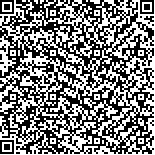本文已被:浏览 994次 下载 770次
Received:December 18, 2020 Published Online:July 20, 2021
Received:December 18, 2020 Published Online:July 20, 2021
中文摘要: 目的分析安罗替尼对晚期非小细胞肺癌(NSCLC)患者中医证型及演变特征的影响。方法选取2017年6月至2020年8月在唐山市人民医院进行治疗的100例晚期NSCLC(包括Ⅲb、Ⅳ期)患者作为研究对象,其中56例男性,44例女性;腺癌47例和鳞癌53例。对纳入研究的100例患者使用小分子多靶点酪氨酸激酶抑制剂——盐酸安罗替尼胶囊(正大天晴药业,国药准字H20180004)靶向治疗,对安罗替尼治疗前7 d、治疗后42 d(2个周期)患者的中医症候、体征情况、舌苔、脉象等进行观察记录,将观察的内容按照中医证候诊断标准进行总结分型。结果晚期NSCLC患者的症状以咳嗽、咳痰以及胸背疼痛为主,发生率分别为82.00%、80.00%以及53.00%。面色正常的患者仅为29.00%。治疗前舌苔偏黄的患者有40例(40.00%),脉象滑数或滑的患者43例(43.00%)。治疗后患者黄腻苔、舌质红、滑数脉减少,差异有统计学意义(P<0.05);治疗后薄黄苔、少苔或无苔、舌质干红、淡白舌、结代脉、细数脉略增加,但差异无统计学意义(P>0.05)。安罗替尼治疗前7 d,证候为气虚证和痰湿证的患者合计73.00%;治疗后,痰湿证、气虚证患者比例降低为36.00%;阴虚内热证、气阴两虚证患者合计比例治疗后较治疗前增加(50.00% vs 17.00%),差异有统计学意义(P<0.05,P<0.01)。结论靶向药物安罗替尼对晚期NSCLC患者治疗前后中医证型演变的影响具有一定的规律性,治疗前患者的证型主要以痰湿证、气虚证为主,治疗后患者的证型主要以气阴两虚证、阴虚内热证为主,提示安罗替尼治疗前期可以适当服用一些益气养阴、清热解毒的药物辅助治疗。
Abstract:Objective To analyze the impacts of anlotinib on traditional Chinese medicine(TCM) syndrome types and evolution characteristics of patients with advanced non-small cell lung cancer (NSCLC).
Methods A total of 100 patients with advanced NSCLC (stage Ⅲb and Ⅳ) treated from June 2017 to August 2020 were selected as the subjects,including 56 males and 44 females,47 cases of adenocarcinoma and 53 cases of squamous cell carcinoma.After the patients were treated with small molecule multi-target tyrosine kinase inhibitor—anlotinib hydrochloride capsule,TCM symptoms,physical signs,tongue coating and pulse condition were observed.The contents of the observation were summarized and classified according to the diagnostic criteria of TCM syndromes at 7 days before treatment and 42 days after treatment (two cycles).
Results The main symptoms of patients with advanced NSCLC were cough(82.00%),expectoration(80.00%) and chest and back pain (53.00%),and only 29.00% patients presented with normal complexion.Before treatment,there were 40 cases (40.00%) of yellow tongue coating and 43 cases (43.00%) of slippery pulse.After treatment,the number of cases with yellow-greasy tongue coating,red tongue and slippery pulse statistically decreased (P<0.05),while the cases of thin and yellow tongue coating,little or no tongue coating,dry and red tongue,pale white tongue,regularly intermittent pulse and thready-rapid pulse increased slightly,but there were no statistical difference before and after treatment(P>0.05).
Seven days before treatment,the total proportion of syndrome type of Qi-deficiency and phlegm-dampness was 73.00%,after 42 days of treatment,it significantly decreased to 36.00%,and there was significant difference(P<0.01).Before treatment,the total proportion of syndrome type of internal-heat due to Yin-deficiency and Qi-Yin deficiency was 17.00%,and it increased to 50.00% after treatment,and there was significant difference (P<0.01).
Conclusions The targeted therapy with anlotinib has a certain influence on the evolution of TCM syndrome types in patients with advanced NSCLC.The syndrome types of patients are mainly phlegm-dampness and Qi-deficiency before treatment and were Qi -Yin deficiency and Yin-deficiency with internal-heat after treatment.It is suggested that some drugs for tonifying Qi,nourishing Yin and clearing away heat and removing detoxify can be taken appropriately in the early stage of treatment.
文章编号: 中图分类号:R734.2 文献标志码:B
基金项目:河北省中医药类科研计划课题(2020412)
| Author Name | Affiliation |
| XUAN Li-gong,XIAO Lin,YAO Lei | Department of Radiotherapy and Chemotherapy,Tangshan People′s Hospital,Tangshan,Hebei 063000,China |
| Author Name | Affiliation |
| XUAN Li-gong,XIAO Lin,YAO Lei | Department of Radiotherapy and Chemotherapy,Tangshan People′s Hospital,Tangshan,Hebei 063000,China |
引用文本:
